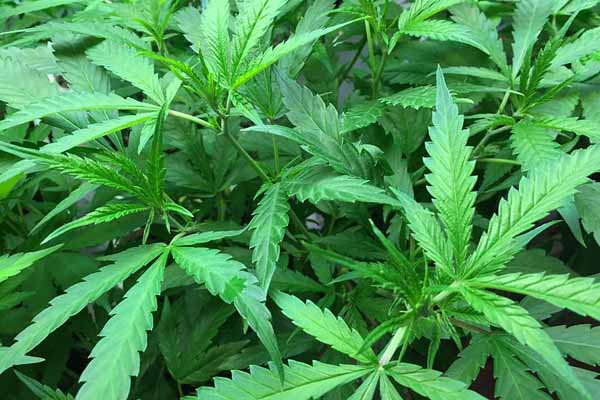
Legal uses for medical cannabis in Texas have reached an all-time high. Soaring even higher is interest in the Texas Compassionate Use Program (TCUP) under which physicians can prescribe it.
Since the Texas Legislature paved the way for the first allowances for low-tetrahydrocannabinol (THC) medical cannabis in the Lone Star State six years ago, lawmakers have slowly expanded its legality. That continued during the 2021 regular legislative session, when lawmakers passed a measure allowing its use for the treatment of post-traumatic stress disorder (PTSD) and any type of cancer.
By TCUP’s data, that law appears to have had a massive impact.
Between May and October 2021, patient participation in the state’s Compassionate Use Registry, as reported by patients’ physicians, jumped by over 140% to more than 13,000 patients. The biggest climbs by month came from September onward, when the PTSD/cancer expansion law, House Bill 1535, went into effect. The number of physicians approved to prescribe cannabis through the program increased as well, jumping from 323 in May to 465 in October.
As interest spikes, an updated Texas Medical Association white paper (TMA login required) provides information on the history of the state’s Compassionate Use Act, how physicians qualify to participate in TCUP, and considerations of both federal and state law.
The increased demand is reflective of what licensed Manchaca dispensary Texas Original Compassionate Cultivation has seen this year. Austin pediatric neurologist Karen Keough, MD, chief medical officer of Texas Original, said in the past couple of months, the dispensary has approached “triple the amount of products sold.” The new allowances, she adds, are a step up from widely available, lightly regulated cannabidiol (CBD) products.
“We’re capturing a lot of people who were using over-the-counter CBD and now have an option for regulated, quality medication that’s going to be more beneficial to them. And they’re going to be doing it under the supervision of a prescribing physician, which is additionally beneficial for a number of reasons – partly because it means that it will probably work better, but also because it will be integrated into their medical care plan, with consideration of other things that they’re doing,” Dr. Keough said.
“Better supervision means better care, as opposed to just taking something from the local corner shop where you don’t really know what you’re getting and the person who’s selling it to you has no idea medically what they’re talking about.”
As explained in TMA’s white paper, the Compassionate Use Act originally allowed only patients with intractable epilepsy to undergo low-THC medical cannabis treatment after failed treatment with at least two “appropriately chosen and maximally titrated antiepileptic drugs.”
From that narrowly focused beginning, the legislature in 2019 expanded the list of diseases that could be treated with medical cannabis, allowing any type of epilepsy, not just “intractable epilepsy,” to be treated, and removing the requirement for unsuccessful treatment on two or more antiepileptic drugs. Lawmakers also added to the list seizure disorder, multiple sclerosis, terminal cancer, and autism, among other diseases.
Then during this year’s regular session, HB 1535 by Rep. Stephanie Klick (R-Fort Worth) added PTSD and opened it to any type of cancer, not just terminal cancer. Representative Klick has been careful to work with medicine in crafting legislative changes to the Compassionate Use Program.
HB 1535 also increased the maximum potency from 0.5% THC by weight to 1%. In research to date, the potency has been “probably the most important variable” in determining whether medical marijuana is helpful, harmful, or neither on a given condition, says San Antonio psychiatrist Michael Arambula, MD, president of the Texas Society of Psychiatric Physicians and a doctor of pharmacy. While CBD is anxiolytic, meaning it reduces anxiety, “THC is anxiogenic, which means it increases anxiety. They balance each other,” he said. “So depending on the potency of THC compared to CBD, the outcomes can be widely variable, i.e., it can be pretty positive if they’re closely related in potency, and horrible outcomes when the THC is too potent. Because then it typically overrides anything CBD does.”
Dr. Arambula added that increased marijuana legalization elsewhere in the U.S. “is like a social experiment, and medically, we’re going to see what happens. Because everything I’ve seen in the literature has been very cautious about legitimizing mass quantities of marijuana in huge populations. It’s still too early to tell.”
Current TMA policy supports “further adequate and well-controlled studies of marijuana” and related compounds for potential medical use, “particularly in patients with serious conditions for which preclinical, anecdotal, or controlled evidence suggests possible efficacy and for the application of such results to the understanding and treatment of disease.”
TMA policy also supports:
- Evidence-based strategies that will help to reduce use by children, adolescents, and pregnant women, and others at higher risk of adverse effects;
- Identifying resources for physicians on research relating to medical marijuana and working with specialty societies to guide education and information that should be shared with patients; and
- Affirming the physician’s right to discuss all possible treatment options with patients related to their health and clinical care, including the use of marijuana, without threat of regulatory, disciplinary, or criminal sanctions to either the physician or the patient.
However, TMA policy also cautions that the association’s aforementioned positions “should not be viewed as an endorsement of state-based medical cannabis programs, the legalization of marijuana, or that scientific evidence on the therapeutic use of cannabis meets the current standards for a prescription drug product.”